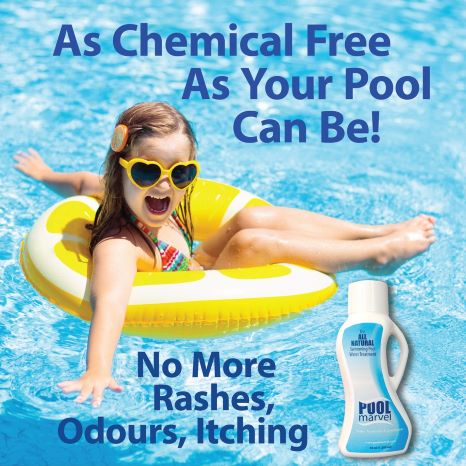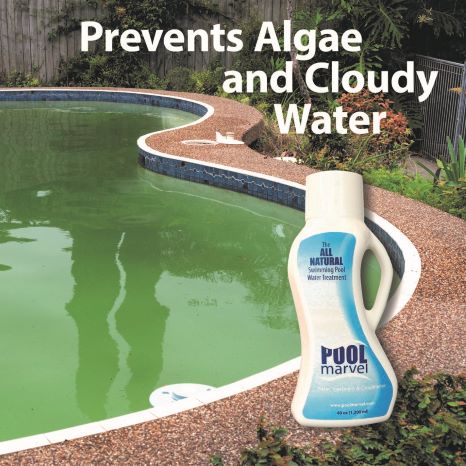
Using Less Chemicals
A chemical-free or chlorine-free swimming pool is simply not possible. When sanitizer is not present, a pool will quickly become the perfect breeding environment for bacteria, viruses, and parasites. This will, in turn, create unsafe swimming conditions.
However, there are several ways to reduce exposure to chemicals such as chlorine in your swimming pool. Some of the most popular ones include increasing filtration, using a supplemental system, and making your pool more natural.
Pool Treatments To Reduce Chemicals
Increase Filtration
You should filter your pool water at least three times your pool volume every 24 hours. When you increase the amount of filtration past the minimum, you’re removing more dirt, debris, and bacteria that would otherwise be dealt with chemically. By removing debris via mechanical filtration, substantially less chlorine will be necessary.
The more you filter your water, the cleaner it will become, and fewer contaminants will exist that require chemical treatment.
Use A Supplemental System
Systems such as Advanced Oxidation Process (AOP), ultraviolet (UV), and ozone provide the opportunity to use only a trace amount of residual chlorine.
AOP Pool Systems: These systems make short-lived, super-powerful oxidizers called hydroxyl radicals that destroy pathogens, microorganisms, and contaminants in pool water. AOP Pool systems must run continuously to treat the water but are highly effective and environmentally friendly.
Ozone Pool Systems: Ozone pool systems purify pool water up to 3,000 times quicker than chlorine-based systems. Contaminants are destroyed when these systems inject ozone gas (a stronger oxidizer than chlorine) into the pool water. Due to its toxicity, ozone can only treat water in plumbing, not the pool itself. A period of weeks is necessary to ozonate a swimming pool, and ozone generators are expensive in residential settings.
UV Pool Systems: Powerful ultraviolet lights in these systems destroy pool microorganisms. However, the system’s lamps are expensive to operate, and their protective sleeves can become damaged by pool oils.
Treat Your Pool Water With Enzymes
Various green pool products and chemicals are available to reduce your chlorine usage. For example, Pool Marvel Water Treatment and Conditioner is an entirely natural swimming pool treatment that uses plant enzymes to break down organic waste.
Compatible with all traditional pool systems, including chlorine, saltwater, UV, and ozone, this swimming pool water conditioner helps treat numerous water quality problems. It also helps maintain proper water balance while reducing the amount of necessary chlorine.
Choose A Saltwater Pool System
Although they don’t eliminate the need for chlorine in your swimming pool, saltwater pool systems use salt to create a stable chlorine output. There’s less need for additional cleaning chemicals and algae and shock treatments. The water is also odourless and more comfortable to swim in.
Use Mineral Sanitizers
Using pool mineral sanitizers (or swimming pool ionizers) such as silver and copper can be natural deterrents to bacteria, viruses, and other pathogens. Pool mineral sanitizers can reduce your chemical demand by up to 50 percent while making your pool water safer and clearer.
Mineral compounds can be added to your pool water either by hand or with the help of an ozonator or chemical dispenser. They release positively charged mineral ions into pool water on an active basis and can last up to six months, depending on the pool size and usage.
However, pool mineral sanitizers can create visible staining and have limited capability in oxidizing organic materials such as body oils and pollen.
Operate Your Pool Naturally
If you live in a warmer climate, choosing to have a natural swimming pool may be a way to use fewer chemicals. This type of swimming pool integrates carefully-chosen elements of nature to clean and maintain the pool water.
Certain water plants work well with filtration systems to effectively clean and maintain pool water. The water flows and filters naturally through pockets containing plants and gravel connected to the swimming pool. The plant roots help filter chemicals and bacteria, while a beautiful, natural swimming pool is created.
Strategic landscaping can also help decrease the need for chemicals by reducing debris blown in from the wind, water evaporation, and heating costs.
Clean The Pool Thoroughly
Although labour-intensive, manually cleaning your pool daily can significantly reduce the number of phosphate removers and algaecide treatments.
Use a net to remove debris that enters your pool before it has the opportunity to decompose and release phosphates (algae food) into your pool water. Manually scrub your pool surfaces (walls, steps, waterlines, etc.) at least twice weekly to loosen up debris on pool surfaces. Instead of allowing the debris to take root, it will then be removed by your filtration system.
Use a robotic pool cleaner every other day to help you perform the scrubbing of pool surfaces. When pool surfaces are cleaner, fewer chemicals are necessary to keep your pool clean.
Cover Your Pool
When not in use, be sure to cover your pool with a quality pool cover. By preventing dirt and debris from entering your pool in the first place, you’ll be able to preserve the chemicals in your pool and minimize the need to add anything extra.
A cover also reduces exposure to sunlight. If your pool receives too much UV exposure, an algae bloom can occur, necessitating more chemical use. A solar pool cover will help keep heat from the sun and reduce water evaporation from heat loss.
Maintain Proper Water Balance
Performing regular pool water maintenance – such as shocking your pool weekly and cleaning the filter regularly – can minimize the number of chemicals needed.
Use Phmb Or -Guanides
Treating your pool with Polyhexamethylene Biguanide (PHMB) is more stable than chlorine, requires fewer doses, and does not involve stabilizers like cyanuric acid. The chemical compound penetrates and bursts bacteria cell walls, which sink to the pool bottom, where they can be vacuumed and removed.
Although it’s still technically a chemical, PHMB is a viable option if looking for chlorine or bromine-free pool. However, since it doesn’t oxidize, you’ll need to use hydrogen peroxide and a separate algaecide.
Frequent cleaning of pool filters will also be necessary.


